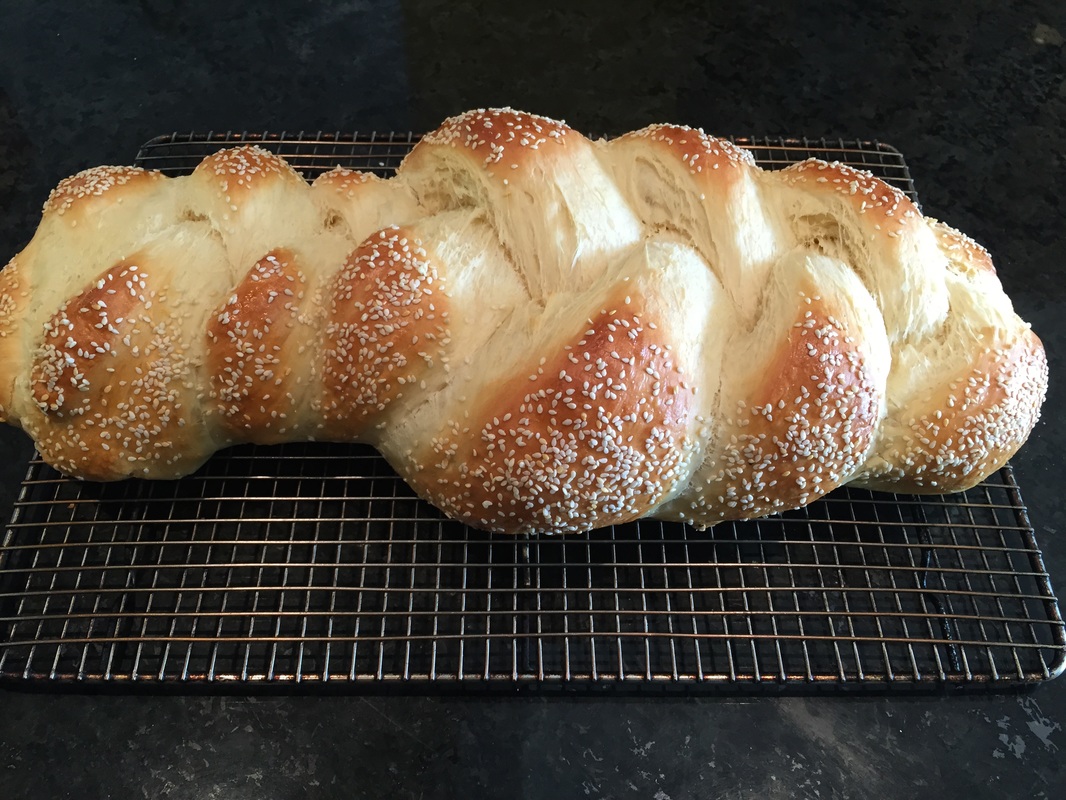| Once again I find myself with something of a dilemma. On one hand, I would very much like to write this blog about bread making to explain how easy it is to do, and how rewarding and delicious the end result can be. On the other hand, I will be the first to admit that bread making does not always work as advertised the first time you try it! Clearly, my first hand won the day (or you wouldn’t be reading this), but I decided I should begin at the very beginning to explain why I now believe bread making is something everyone should try at least twice! According to my “infallible” information source, Wikipedia, archaeological evidence of bread making – albeit unleavened bread making – has been found in parts of Europe that dates back to the Upper Paleolithic Period of 30,000 years ago. Further research shows that bread making machines weren’t available until many years later, so one conclusion could be that making bread shouldn’t be that difficult! Bread making shops appeared in Athens in the 5th century B.C.E., and Greeks reportedly opened bread shops in Rome about 300 years later – again, presumably without bread machines! More valuable evidence that bread making should be easy. In the early 20th century, my maternal grandmother – mother of 12 growing offspring – (also reportedly) baked bread daily for her family, friends, and the occasional hungry soul that managed to find his way to her backyard wood-fired oven. I arrived on the scene much too late to experience her bread, or even to see her oven, but I remember vividly the (most likely exaggerated) family stories of her baking prowess – yet again, without using a bread making machine. Although I lacked evidence that bread making skills were genetic, I confidently attempted to bake my first loaf many years ago. What could go wrong? Only three ingredients are required: flour, yeast, and water. Nevertheless, my initial foray into the world of leavened bread making was not quite what I expected. The taste was acceptable, but the appearance and texture were definitely works in progress. | Ciabatta. Braided Challah. |
Through his book, Peter Reinhart has taught me to bake several different types of breads – all very successfully. My two favorites – Challah and Ciabatta – are the featured recipes for this blog.
Challah, as you know, is an egg-rich Jewish celebratory bread. It is traditionally braided and topped with sesame or poppy seeds. It is delicious any way you serve it, but it also makes the most extraordinary French Toast imaginable. Most important, the recipe is easy and only requires about four hours from start to finish (all but about 15 minutes of which is required for proofing and baking). In my biased view, this is the perfect recipe for the novice bread maker!
Sometimes, just to avoid the braiding step, I form the dough into two traditionally-shaped loaves – the shape of most white and wheat breads on store shelves. The details for how to bake Challah as a braid and as two loaves are provided on the Challah recipe page on this site.
My all-time favorite, however, is the classic Italian bread called Ciabatta. Ciabatta has a chewy crust and distinctive large holes in the crumb (i.e., the interior of the bread). The holes are created when the water in the relatively “wet” dough expands as it evaporates during the baking process.
Ciabatta tastes best when it is made with a Poolish – or starter – made with flour, yeast, and water, at least one day in advance. About four hours is required the second day, but again, all but about 20 minutes of this time is used for proofing and baking.
If you have baked bread before, you already know how easy it is to produce a delicious treat for your family and guests. If you are new to the bread making world, I sincerely hope I have not discouraged you from joining in. Once you have moved beyond that first attempt – which I have already noted is a potentially frustrating experience – I fully expect you soon will be baking bread on a regular basis.
Regardless of your experience level, however, I recommend that you try the recipes here for Challah and Ciabatta. I know you will not be disappointed.
Buon appetito.


 RSS Feed
RSS Feed